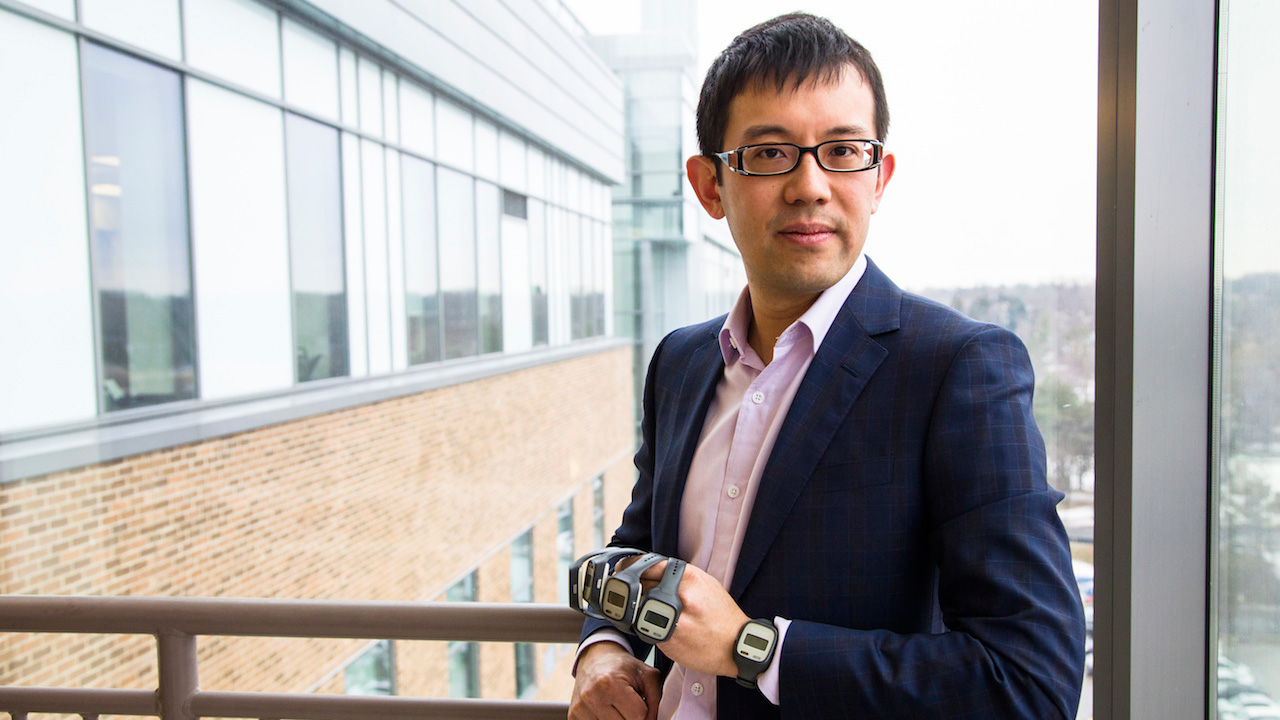To sleep, perchance to think
Sources from antiquity have noted that Dionysius, a tyrant who ruled the kingdom of Heraclea in the fourth century B.C., was such a heavy sleeper that doctors ordered he be pierced with long, thin needles to wake him. It’s believed the obese ruler had trouble breathing while catching some Zs—a hallmark of sleep apnea. The condition is but one of a number of problems with repose that people can have, says Dr. Andrew Lim, a neuroscientist at Sunnybrook Research Institute and neurologist at Sunnybrook.
“There are many different ways that your sleep can get screwed up,” says Lim, noting that insufficient sleep; an irregular schedule; or sleep that is too early, too late or fragmented are the other main issues. “We don’t know which of these types of disruptions are most dangerous for neurological health. One big aim of my research is to try and figure out what are the things that are really bad for you, and what are the things we don’t need to worry about.”
His goal is to shed light on how disruptions in sleep and circadian rhythm (the daily sleep-wake cycle) affect one’s risk for developing Alzheimer’s disease and experiencing overall cognitive decline. Thanks to a five-year grant from the U.S. National Institutes of Health worth more than $3 million, Lim has the support to do just that. He will study the sleep, circadian rhythms and brain changes leading to mental deterioration in 1,000 older adults.
Participants will wear fitbit-like devices called accelerometers that track their sleep. The researchers will use data collected from the devices to measure disturbances in sleep and circadian rhythm. The participants will also wear a device on their finger that assesses heart rate and constriction of blood vessels. “It measures beat-by-beat changes in finger [blood] volumes. It’s a measure of both heart rate and arterial tone—vasoconstriction. From that, we can make inferences about sleep stage and quality, and sleep apnea,” says Lim.
The researchers will relate these measures with structural changes in the brain that are seen on MRI scans. Specifically, they will study variations in the white matter, grey matter and overall volume of the participants’ brains to test their hypothesis that chronically lousy shuteye is linked to poor brain health. “We think that vascular damage or white matter damage that you might see on an MRI might be one of the things that happens with sleep disruption that can lead to Alzheimer’s disease,” says Lim.
Another piece of the puzzle is to look at cognitive assessments of the participants over the five-year study to determine whether those with sleep problems had more rapid decline. Because the volunteers committed to brain donation upon death, when they pass away, the researchers will analyze brain tissue to look for signs of Alzheimer’s disease, including brain plaques and tangles, inflammation and damage to the brain’s blood vessels. These findings will be considered alongside the participants’ slumber patterns.
The hope, says Lim, is to be able to pinpoint specific issues that are strongly related to developing dementia so that they may be addressed. “If we identify sleep fragmentation, or some other element of sleep disruption, like duration—maybe it will turn out that sleeping six hours is really horrible and that is the thing that’s driving this association—we can say, ‘you really should be sleeping more.’”
Studying the effects of sleep and problems therewith is a personal interest of Lim’s. “I’ve always loved to sleep,” he says, smiling. Even as he contends with broken sleep—due to his work schedule and the recent birth of his second child—he is committed to understanding the importance of a good night’s rest. “I think the scientific community is catching up to this idea that we’re supposed to sleep for a third of our lives. Up until very recently, we weren’t sure what this was doing to our brains—how important good sleep is in helping our brains. I think it’s a field that’s going to have a lot to contribute to the broader questions of neurological health. Sleep is a huge part of brain health and we’re starting to understand why that is.”
For more on Lim’s research, read That syncing feeling, published in the 2017 SRI Magazine.
In a nutshell
- Dr. Andrew Lim is studying how disruptions in sleep and circadian rhythm affect the risk of neurological damage.
- He will examine the link between sleep disturbance and changes in the brain leading to cognitive decline.
- The aim is to identify specific sleep problems that are related to developing dementia to be able to address them.



